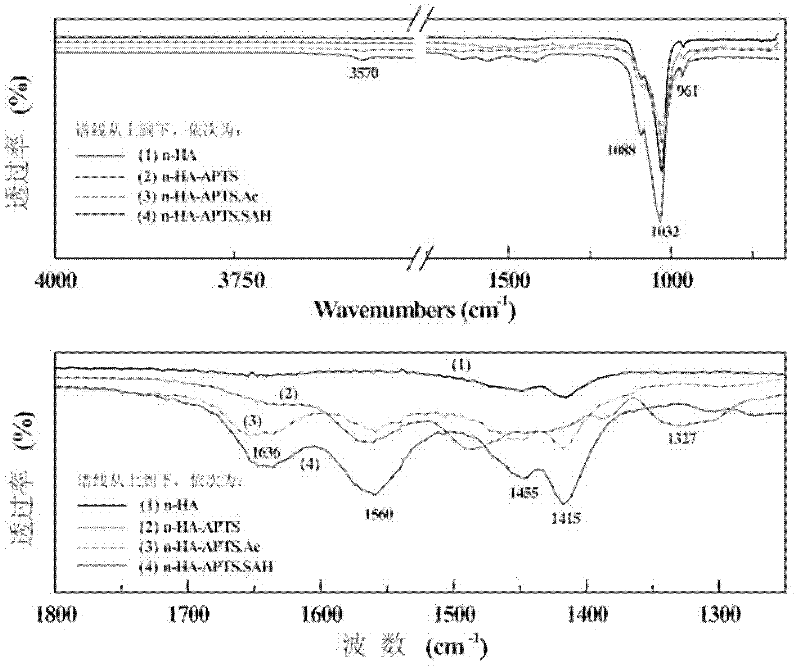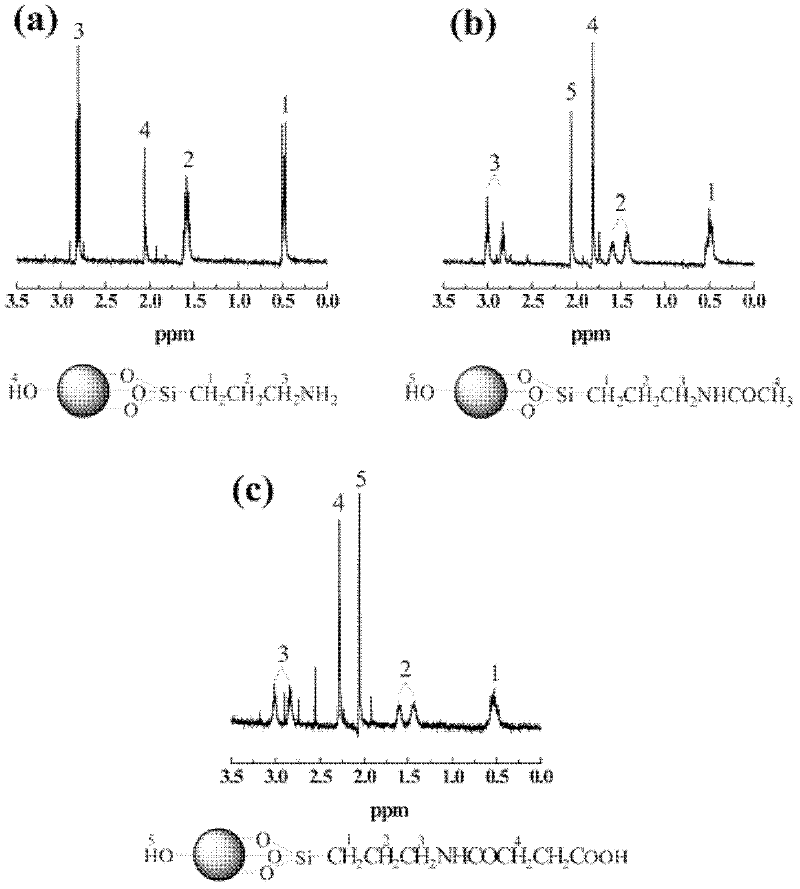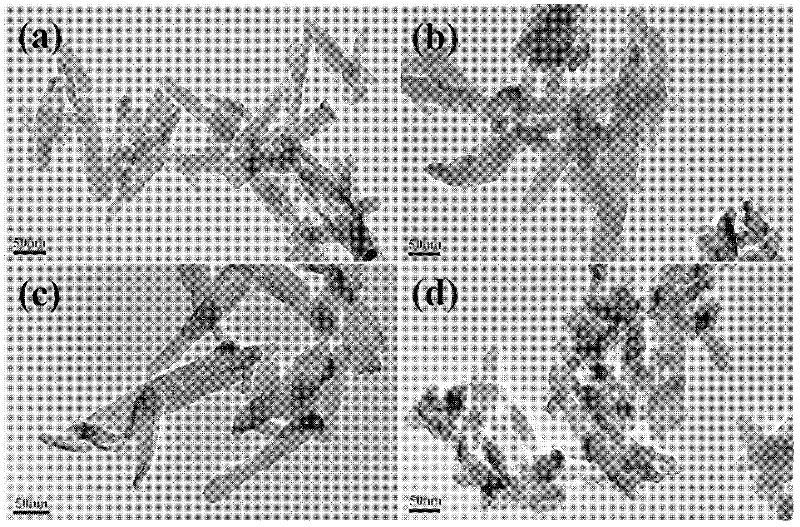Surface modification method of nanometer hydroxyapatite mediated by APTS
A nano-hydroxyapatite and surface modification technology, applied in recombinant DNA technology, medical science, prosthesis, etc., can solve the problem of lack of comprehensive evaluation of cytotoxicity and blood compatibility, and achieve easy operation and increase the number of , the effect of enhancing modifiability
- Summary
- Abstract
- Description
- Claims
- Application Information
AI Technical Summary
Problems solved by technology
Method used
Image
Examples
Embodiment 1
[0054] Mix 190mg of n-HA with 200mL of absolute ethanol, supplemented by ultrasonic dispersion (80W, 1.5h), to prepare n-HA / ethanol suspension; slowly add 200μL APTS to the above n-HA / ethanol suspension, And under the condition of room temperature supplemented with magnetic stirring reaction for 12h, the reaction ended. The suspension obtained by the reaction was centrifuged (6000r / min, 5min), washed (2 times with distilled water, 3 times with absolute ethanol), separated and precipitated to obtain n-HA-APTS nanoparticles.
Embodiment 2
[0056] Mix 200mg n-HA with 200mL absolute ethanol, supplemented by ultrasonic dispersion (50W, 2h), to prepare n-HA / ethanol suspension. Add 5 mL of ultrapure water dropwise to the above n-HA / ethanol suspension. After uniform magnetic stirring, 235 μL APTS was slowly added dropwise to the above n-HA / ethanol suspension, and reacted for 12 hours at room temperature with the aid of magnetic stirring, and the reaction was completed. The suspension obtained by the reaction was centrifuged (6000r / min, 5min), washed (2 times with distilled water, 3 times with absolute ethanol), separated and precipitated to obtain n-HA-APTS nanoparticles.
Embodiment 3
[0058] 200 mg of n-HA-APTS nanoparticles prepared in Example 1 were uniformly dispersed in 15 mL of DMSO by ultrasonic assistance, and 1 mL of triethylamine was slowly added dropwise under the condition of magnetic stirring, and stirring was continued for 30 min to make it mix with n-HA -APTS dispersion mixed thoroughly. Then, 500 μL of DMSO solution containing 50 μL of acetic anhydride was slowly added, and the reaction was carried out at room temperature for 24 h with the aid of magnetic stirring, and the reaction was completed. The suspension obtained by the reaction was centrifuged (6000r / min, 5min), washed (2 times with distilled water and 3 times with absolute ethanol), separated and precipitated to obtain n-HA-APTS.Ac nanoparticles.
PUM
 Login to View More
Login to View More Abstract
Description
Claims
Application Information
 Login to View More
Login to View More - R&D
- Intellectual Property
- Life Sciences
- Materials
- Tech Scout
- Unparalleled Data Quality
- Higher Quality Content
- 60% Fewer Hallucinations
Browse by: Latest US Patents, China's latest patents, Technical Efficacy Thesaurus, Application Domain, Technology Topic, Popular Technical Reports.
© 2025 PatSnap. All rights reserved.Legal|Privacy policy|Modern Slavery Act Transparency Statement|Sitemap|About US| Contact US: help@patsnap.com



